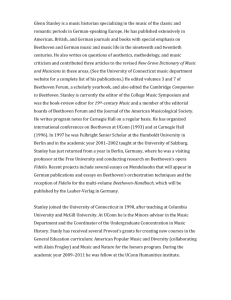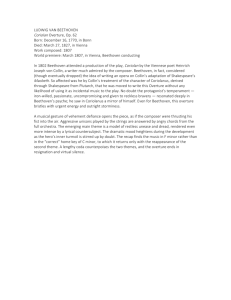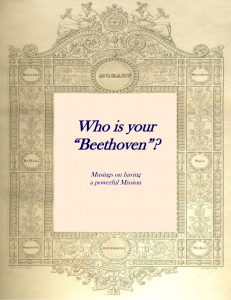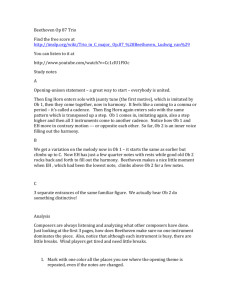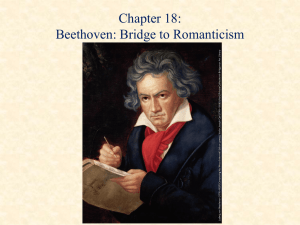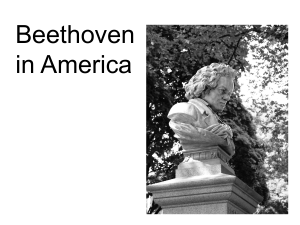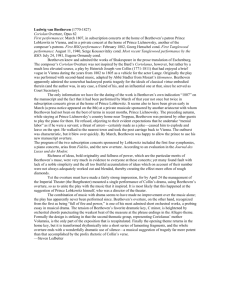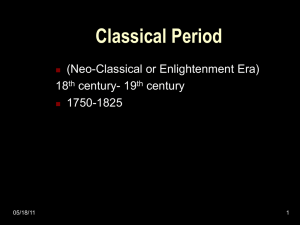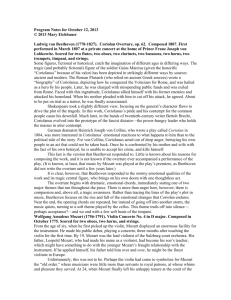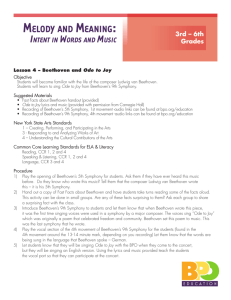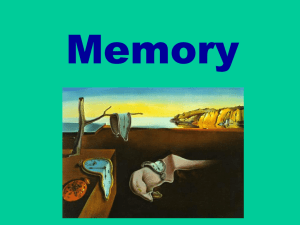MUSHISTCHAP23HWK-1.doc
advertisement
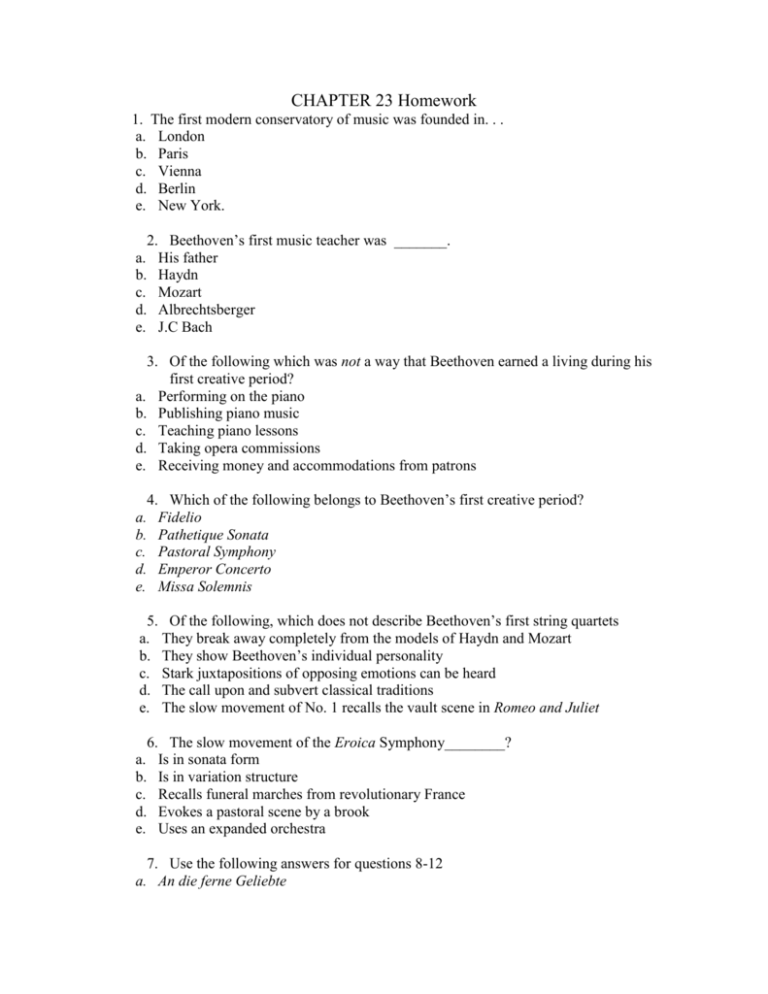
CHAPTER 23 Homework 1. The first modern conservatory of music was founded in. . . a. London b. Paris c. Vienna d. Berlin e. New York. 2. Beethoven’s first music teacher was _______. a. His father b. Haydn c. Mozart d. Albrechtsberger e. J.C Bach 3. Of the following which was not a way that Beethoven earned a living during his first creative period? a. Performing on the piano b. Publishing piano music c. Teaching piano lessons d. Taking opera commissions e. Receiving money and accommodations from patrons 4. Which of the following belongs to Beethoven’s first creative period? a. Fidelio b. Pathetique Sonata c. Pastoral Symphony d. Emperor Concerto e. Missa Solemnis 5. Of the following, which does not describe Beethoven’s first string quartets a. They break away completely from the models of Haydn and Mozart b. They show Beethoven’s individual personality c. Stark juxtapositions of opposing emotions can be heard d. The call upon and subvert classical traditions e. The slow movement of No. 1 recalls the vault scene in Romeo and Juliet 6. The slow movement of the Eroica Symphony________? a. Is in sonata form b. Is in variation structure c. Recalls funeral marches from revolutionary France d. Evokes a pastoral scene by a brook e. Uses an expanded orchestra 7. Use the following answers for questions 8-12 a. An die ferne Geliebte b. c. d. e. The Pastoral The Eroica The Grosse Fuge The Emperor 8. A single movement work for string quartet from Beethoven’s late period . . . a. An die ferne Geliebte b. The Pastoral c. The Eroica d. The Grosse Fuge e. The Emperor 9. A song cycle from Beethoven’s late period a. See above 10. The nickname for Beethoven’s Piano Concerto Number 5 a. See above 11. The nickname for Beethoven’s Symphony Number 6 a. See above 12. The nickname for Beethoven’s Symphony Number 3 a. See above a. b. c. d. e. 13. When Beethoven realized that he was going deaf he wrote_________ His last symphony The Heiligenstadt Testament A suicide note. His autobiography A string quartet 14. Of the following, which is not a characteristic of Beethoven’s late period? a. Fondness for variation form b. Unconventional number of movements in works c. Contemplative quality d. Imitation of Haydn’s more whimsical works e. Fondness for fugues Use the following for questions 15-18 a. Napoleon b. Rudolph c. Lichnowsky d. Schiller e. Razumovsky 15. Beethoven intended the Missa solemnis to be performed when this man became archbischop. a. See above 16. He wrote the words to the Ode to Joy a. See above 17. He was a patron who allowed Beethoven to live in one of his houses a. see above 18. Beethoven dedicated his Opus 59 string quartets to him a. see above 19. Which composer’s works served as models for Beethovens Missa Solemnis? a. Mozart b. J.S. Bach c. Handel d. Haydn e. Palestrina 20. Of the following, which is unusual about the Ninth Symphony a. the use of chorus b. the use of a variation structure c. the way movements are played without a break d. the four-movement structure e. a lively scherzo movement SHORT ESSAYS: 1. Beethoven’s life is usually divided into three creative periods. Give the dates and major works of each, and briefly characterize the features of Beethoven’s style during each period 2. Discuss the ways in which events in Beethoven’s life affected his music.. 3. In what respects was Beethoven’s financial situation different from that of Haydn and Mozart? How did his financial circumstances affect his compositional output and style? 4. Name at least five unusual features of Beethoven’s 9th symphony and describe them briefly Terms for Identification Napoleon Bonaparte Paris Conservatoire Johann Georg Albrechtsberger Prince Karl von Lichnowsky Sonate pathetique Opus 18 string quartets Archduke Rudolph Heiligenstadt Testament Song cycle Ode to Joy
